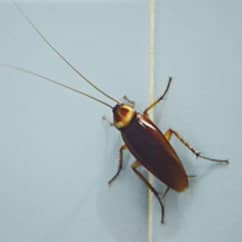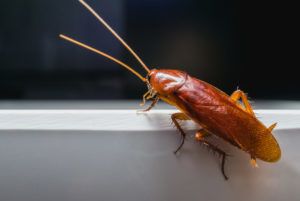The Complete Guide to How to Get Rid of Wasps
Spring and summer lead to more time playing outdoors and enjoying the weather. Unfortunately, it can also mean wasps take up residence around your yard, porch, and home. A wasp infestation can be annoying, painful, and even potentially dangerous.
Common Types of Wasps
Before you determine how to get rid of wasps, you need to figure out what type of wasps are invading your space and exactly where their nest is located. Knowing the difference between wasps and bees is the first step in determining the species that is invading your property. There are a few distinguishing traits that make wasps stand out. While bees are hairy, with rounded bodies, wasps have a slender, tapered waist that connects their abdomen and thorax. Wasps are also smooth and shiny.
Paper Wasps
These are the type of wasps that most people think of. They often build nests near the entryways of homes. While they won’t sting unless feeling threatened, sudden movements or slamming doors can be a trigger. Paper wasps tend to swarm if they feel the colony is threatened.
Size: 3/4 to 1 inch long
Color: Mostly brownish-black with red or yellow striping along their head and abdomen
Nest Characteristics: Nests are created of paper-like materials, shaped like umbrellas, and are typically built under eaves and ledges.
Hornets
There are different types of hornets which may vary in size and color. Some species look similar to yellowjackets but are typically larger. Hornets aren’t typically aggressive, but nests can contain hundreds of worker bees that become extremely angry when disturbed.
Size: About 1.25 inches
Color: Bald-faced hornets are black with black or pale yellow stripes. Giant European hornets are yellow and brown.
Nest Characteristics: Nests resemble a large grayish tear-shaped ball. Nests are typically attached to a bush, tree, or the side of a building. They can also be found in attics, barns, and hollow walls.
Yellowjackets
Yellowjackets are easily agitated and will vigorously defend their nest.
Size: 3/8 to 5/8 inch
Color: Bright yellow and black striped pattern
Nest Location: Typically in the ground, nests are often created from abandoned animal burrows. Nests are also sometimes located inside structures or hang from structures.
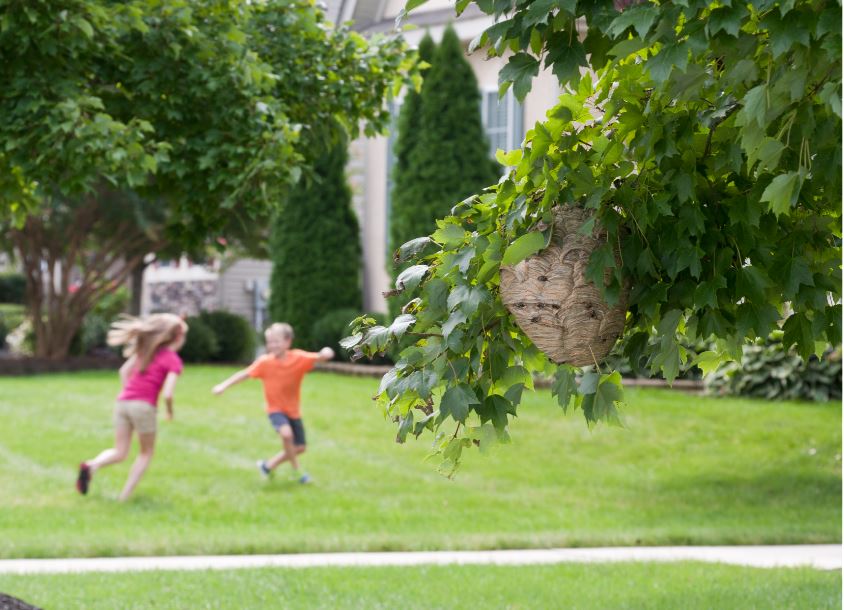
How to Get Rid of Wasps Safely, Step by Step
Wasps don’t often interact with people, but if provoked, they can sting. Wasp stings can be painful to all and threatening to those with allergies. If you’ve got a wasp problem, here is everything you need to know about these pesky insects, including how to get rid of wasps naturally, how to check for infestations, and how to kill wasps with homemade wasp kill.
What do wasps look like?
Wasps are not bees and typically have longer, more slender bodies. They commonly feed on insects such as flies, caterpillars, and spiders, as well as nectar. Wasps have six legs, two wings, two antennae on their head, an exoskeleton, and a body divided into three main parts: the head, thorax, and abdomen.
Unlike a bee, the female wasp can sting repeatedly, as her stinger has small barbs that do not embed into the skin. A female wasp’s stinger is located at the very tip of her lower body and doubles as a reproductive organ through which she lays her eggs. Males wasps, on the other hand, cannot sting.
How do you get wasps?
Three main elements attract wasps to take up residence in your home or yard:
Ideal nesting spots, such as eaves, gutters, and soffits that offer protection
Sweet, nectar-filled flowers and plant life
Food sources, such as garbage bags, pet food bowls, outdoor eating areas with crumbs or sticky spills, or an abundance of insects or spiders
How to check for wasps
If you notice a large number of wasps flying around your home or yard, you likely have a wasp nest somewhere on your property. To locate a wasp nest, first observe a wasp from afar to see which direction it flies. You can also leave out food (such as pet food or canned tuna) to lure the wasps before following them cautiously back to their nesting place.
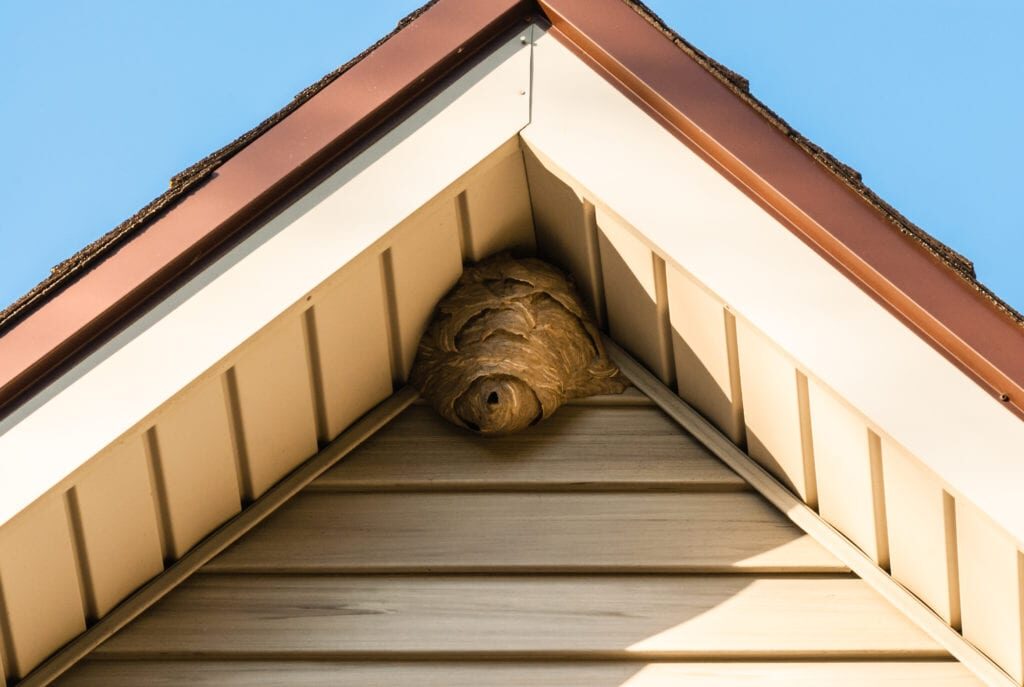
How To Get Rid of Wasps and Yellow Jackets
It never fails: Once temperatures start rising, you inevitably step into your yard to a persistent, tell-tale buzzing and zipping. All it takes is one sting to develop a healthy respect for all manner of wasps, hornets, and yellow jackets. So keeping your outdoor spaces free of them is a priority.
What’s the difference between a wasp, hornet, and yellow jacket?
While often confused, they do vary in a few ways. The first is size: Wasps are smaller, anywhere from one centimeter to two-and-a-half centimeters, while hornets are larger, at about one to one-and-a-half-inches long. Unlike bees, which are important pollinators (find out the best flowering plants to attract bees here!), wasps and hornets are carnivorous; they prey on smaller insects like aphids and houseflies (so they are beneficial in their own way). Wasps love your sugary drinks and may hover over your picnic pickings hoping for a taste
While it’s possible to get rid of wasps, hornets, and yellow jackets on your own, remember that they can be dangerous, especially in large numbers, so if you’re in doubt, it’s best to call a professional to help. Of course, if you are allergic to wasp or bee stings, you need to take precautions and seek outside help. If you feel confident handling your situation, read on for tips that can help with removal
How to get rid of wasps
First off: Don’t swat at them! Swatting at a wasp tells it to release pheromones that will trigger other nearby wasps to perceive you as a threat, exactly what you don’t want to happen.
If you’re working ahead and trying to prevent a nest from forming, you can try putting up a fake nest to deter a real one from forming (wasps are territorial). If you already have a nest that you need to be rid of, you first need to evaluate the size of the nest. Is it small (just a few to a dozen cells)? If so, you can suit up (long sleeves, pants tucked into your socks, a head net, gloves) and knock the nest down during the coolest time of day and destroy it. If it’s larger, set up multiple wasp traps a good distance away from your home, and follow the instructions on the trap.
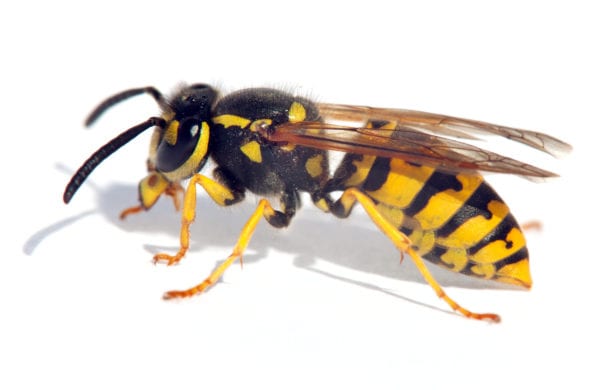
How to Get Rid of Wasps, Hornets, and Yellow Jackets
Several species of wasps can be beneficial to gardens as pollinators, but others can cause harm to homes and people. Wasp stings are painful for most and can cause anaphylactic shock in those that are allergic. That is why it is imperative to control wasp nests around and inside homes, apartments, and commercial buildings.
Before you treat for wasps and hornets, be sure to wear the following to protect against stings:
Long-sleeves
Long pants
Thick work gloves
Closed-toe shoes
You can even wear a complete bee suit if you are worried about stings.
Treat and Remove the Nest
If you know where a wasp or hornet nest is, you can treat the nest directly before removing the nest. There are two ways to treat the nest – drenching and dusting. Hornet nest removal is the same as wasp removal as both pests are very similar
To drench the nest:
1. Mix a concentrated liquid insecticide, such as CS, with water in a hand pump sprayer according to the product label.
2. Next, spray the 2-3 square foot area surrounding the nest with your spray mixture.
3. Then, adjust the nozzle of your sprayer to a pin stream and spray your insecticide mixture directly into the interior of the nest. Be armed with a can of pyrethrin aerosol, such as, to spray any wasps that emerge from the nest.
The combination of spraying around and inside the nest will kill adult wasps and leave behind a residual to kill any hatching wasps. After the product has dried you should be able to safely remove the nest.
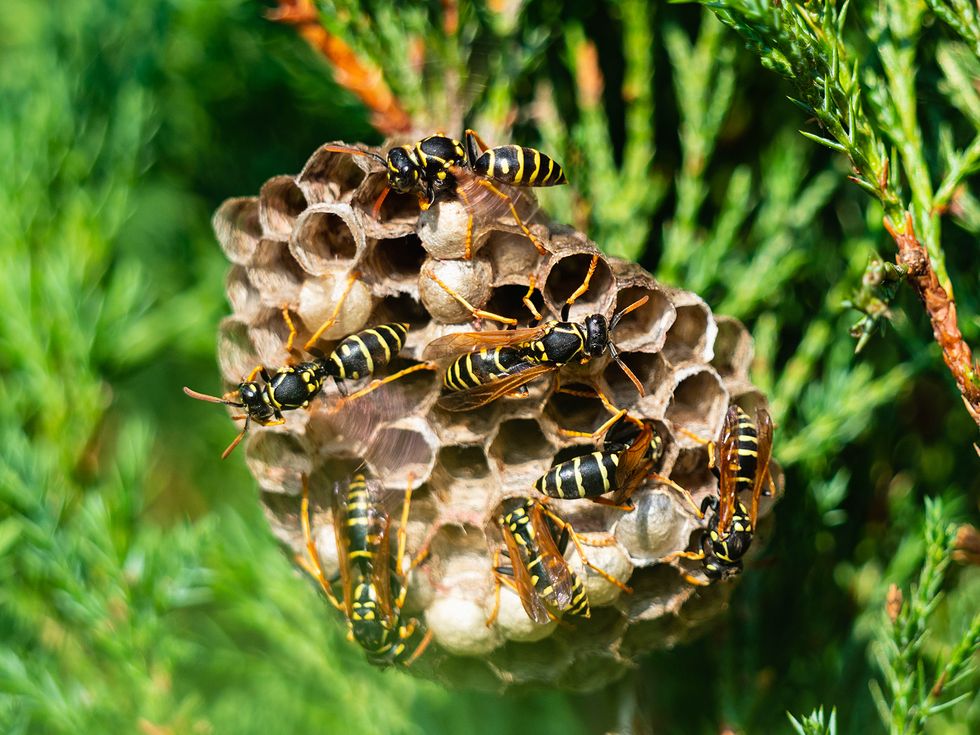
Wasp behaviour and differences from bees
There are many differences between wasps and bees. Wasps are less hairy and slimmer than bees, and their stripes are more distinct, often a bright yellow. The other significant difference is that wasps are more much likely to attack humans. Unlike bees, which can sting only once and then die, wasps can be repeat offenders, if they so choose. And unlike mosquitoes, wasps do not feed on human blood. If they sting, it is only in self-defence.
The main reason wasps come and go is to find food. They consume sugary foods such as nectar and honeydew, a substance produced by aphids and other insects. Wasps also feed on ripe fruit and berries as well as meat. They help themselves to sources of food in recycling bins and garbage cans.
Sizes and shapes of wasp nests
There exist various types of wasps. They can be distinguished by the size and location of their nest. There are three main types of wasp nest:
The smallest is about the size of a hand and looks like an umbrella. It houses 15 to 200 paper wasps (genus Polistes), which are not particularly quick to sting.
The hidden nest, underground or in a dark place, home to much nastier wasps: yellow jackets, or Vespula.
The largest nest, with room for up to 5,000 wasps. Common sites are roof overhangs, porches and trees. It may contain yellow jackets but also hornets (Dolichovespula), which are not very aggressive.
Tips for keeping wasps away from your home
When eating outdoors, keep food in covered containers, and quickly put table scraps in a closable garbage bin.
Avoid funnel-shaped wasp traps. Even if you put them far from your table, the bait they contain will quickly attract the entire neighbourhood’s wasps!
Wash your recycling bin regularly and, above all, rinse wine, juice or soft drink bottles that could attract wasps. Place them well away from high-traffic areas, especially where children play.
What to do to avoid being stung by a wasp?
If a wasp is buzzing around you or lands on you, avoid any sudden move. Push it away gently, because it may turn angry if it feels it’s being attacked. Also, a crushed wasp sets off a chemical alarm that calls in fellow wasps as back-ups.
Avoid going near a wasp nest without good reason, especially late in the summer.
